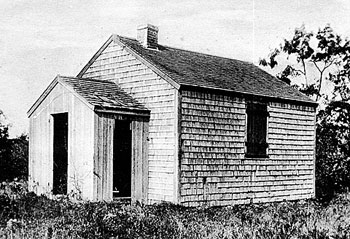Academic Subjects, continued
As students progressed through the system, additional courses of study were offered. US History was introduced in connection with geography. Algebra and geometry built upon basic arithmetic instruction. Latin and French were both offered, as was intellectual philosophy. Science included introductions to astronomy and geology.
Rural vs. Urban
Conditions differed between country communities and the rapidly industrializing city centers. Because rural populations were spread out and average classes were small, coeducation made the most sense for rural schools. It was clear that it was cheaper, more efficient and practical for boys and girls to be educated together in one-room schoolhouses.
Rural life was impacted greatly by family, church and school. The lines between them were often blurred. Sometimes the weekday school teachers were expected to teach Sunday school as well, often in the same building. The homogenous backgrounds of many community members differed from those in the cities.

Martha's Vineyard Museum